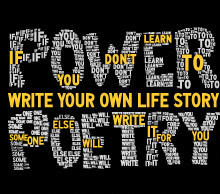
Emily Dickinson grew up in Amherst, MA. As a child she loved school, especially studying botany. After leaving the Mount Holyoke Female Seminary after one year, Dickinson spent most of the rest of her life living in isolation, aside from contact with her family and a few close friends. Her poetry never received attention while she was alive — it wasn't until after her death that her family found and began to publish the 40 volumes of nearly 1,800 poems that Dickinson wrote in her lifetime.
Movement: Romanticism
Prevalent Literary Themes: nature, love/longing, grief/loss, religion, marriage
Prevalent Literary Devices: metaphor, rhyme scheme, imagery
When matched with Emily Dickinson, it means that similarities have been found between your poetic style and the themes and literary techniques typically seen in work by this famous poet. For example, you might use observational language and imagery the same way that Dickinson does. Recognizing these similarities is important because it gives you information about the history of your poetic style, which poets might inspire you, and what writing techniques you should try next.
Which Writing Techniques Should You Try Out Next?
Try using metaphor, rhyme scheme, and imagery more often. You might also like using simile and repetition, and should experiment with line breaks.
Make sure to check out poets.org for more information!
